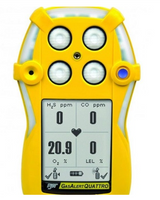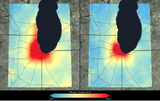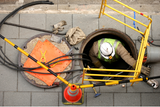Blog
Draeger X-zone 5000 - The Best of Fixed and Portable Gas Monitoring
The
X-zone 5000 from Draeger is designed to get workers out safely in the event of an accident. It combines the best of fixed and portable gas detection technology into a wireless and modular defense system against dangerous gas leaks.
Draeger has been the company that people who are serious about gas detection and safety have turned to for many years. The X-zone 5000 is another in a long line of innovative safety devices that uses cutting edge communications technology combined with
…
Aug 7th 2015
RAE Systems PID Monitor Used to Check for Ping Pong Dopers
Paddle-gate! The great ping pong doping scandal of the 2012 Olympics. How did we miss this when it happened? The one opportunity for levity in our confined space world? How often does Olympic Ping Pong collide with sophisticated RAE Systems gas detection devices? Not often enough, in our view.
Since the 1970s serious ping pong players have apparently been souping up their paddles to increase performance. Early spin doctors found they could gain more control and even add speed by smearin
…
Jul 17th 2015
Don't Use Expired Calibration Gas to Test Monitors
Gas produced and put into bottles for bump testing and
calibrating gas monitors has a finite shelf life, and paying attention to that expiration date might save your life. Using expired gas can lead to incorrect calibration of your gas monitor.
Gas concentrations have been known to drop over time. Reactive gases such as hydrogen sulfide react with the material of the cylinder container, and tests have shown some levels to slip from 20 parts per million (ppm) to 6 ppm over a 12-month peri
…
Jun 26th 2015
Gas Sensors: How Do Gas Monitor Sensors Work?
The sensors in your gas monitor work in different ways to keep you safe. Some wear out relatively quickly, while others could conceivably last forever. Here is a very quick overview to help you understand basic gas sensor technology. We hope this information will allow you to see the benefits of regular maintenance, bump testing and
calibration.
The most common sensors used in confined space work are Oxygen, % LEL (Lower Explosive Level), Carbon Monoxide, and Hydrogen Sulfide. Howeve
…
May 2nd 2015
BW Quattro 4-Gas Monitor Low Cost of Ownership
When considering which personal gas monitors to use for your facility the long-term cost of ownership is going to be at the top of your list. Replacing sensors and hardware over time can be expensive, but so can replacing entire monitors. The
BW Quattro has a two-year sensor warranty which makes it a popular choice for companies who like to know when costs are likely to occur.
When considering the right monitor for your operation, you need to take into account a few critical bits of
…
Feb 18th 2015
The Importance of Air Monitoring for Confined Space
The first of a two-part series on confined space gas monitoring:
Unlike a raging river or pounding surf, the dangers of confined spaces are often silent and unseen. Unless a dangerous atmosphere creates a visible cloud of vapor, there isn’t any way for you to see what hazards lurk within a confined space. This is precisely the reason monitoring equipment is so vital to confined space entry.
While it isn’t possible within this format to provide a comprehensive guide for the use of
…
Feb 13th 2015
An Affordable 4-Gas Monitor With Extended Battery Life
We live in the real world here at
PK Safety. We know you need to fulfill OSHA requirements for 4-gas monitors for workers performing confined space entry. We also know price is a consideration for every business. Luckily there is a solution.
The
BW GasAlert Micro Clip XL is the perfect hybrid of affordability and rugged performance. This monitor is a step forward for BW as they have worked on extending the battery life of their confined space gas monitors. The Micro Clip XL can be
…
Feb 9th 2015
PELs (Permissible Exposure Limits) - Are You Taking the Right Readings?
When isolating or ventilating a permit-required confined space, it is critical that a competent person on your team take meter readings with a
4-gas monitor for oxygen (O2), toxic gases and if applicable, combustible gases (VOCs) with a PID to determine if the processes have been effective. Of course you already know this if you or your company are performing this type of work. But are you measuring for the correct PEL levels?
PEL limits change with some regularity, and what may be r
…
Jan 30th 2015
Bump Test Gas Cylinder: How Many Bump Tests Do I Get From a Cylinder of Gas?
A good customer (all our customers are good, of course) recently asked us to figure out exactly how many bump tests they would get from a
58L of NIST Traceable Gas for their new Gas Clip Technologies Multi Gas Clip (MGC) Monitors (with 2 month battery charge life). The quick answer - a little over 300, and maybe as many as 600. But there's a catch.
Calibration gas has a shelf like. It's longer than a gallon of milk, but still shorter than you might expect. The 4-gas mixture for
…
Jan 28th 2015
Non-Permit Confined Space (NPCS) vs. Permit Required Confined Space (PRCS)
The simple definition of a confined space is an area that is large enough for a worker to enter and work, but that is tough to get in and out of and isn’t designed for regular occupancy. With a definition like that, there are so many spaces that would qualify - under the sink, an attic crawl space, the shed that houses an air compressor. While all of them qualify as a confined space, not all of them will be classified as a permit-required confined space (PRCS).
OSHA has copious files re
…
Jan 16th 2015











